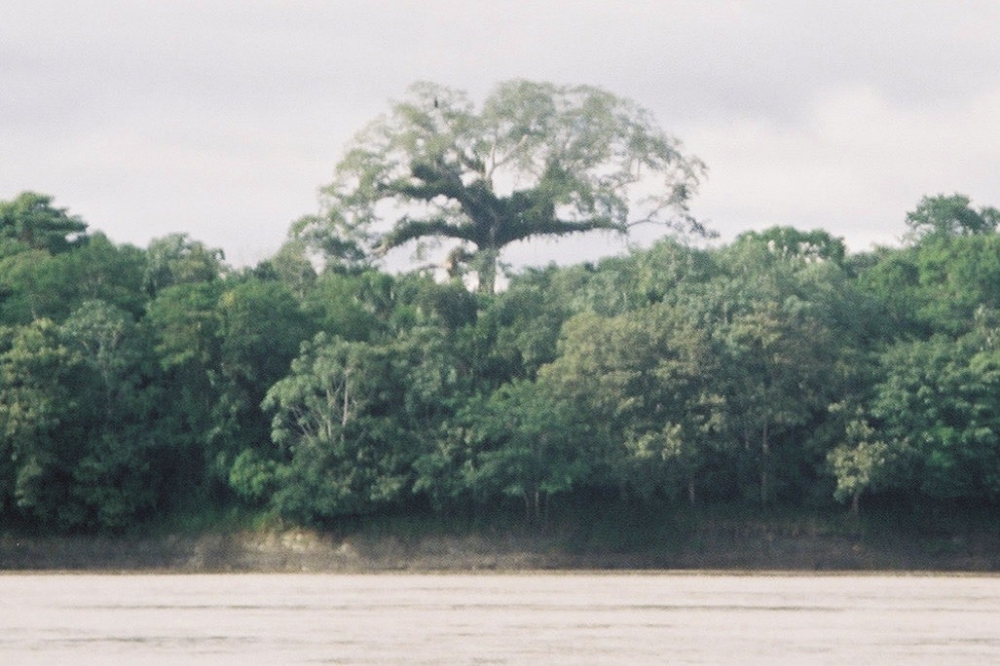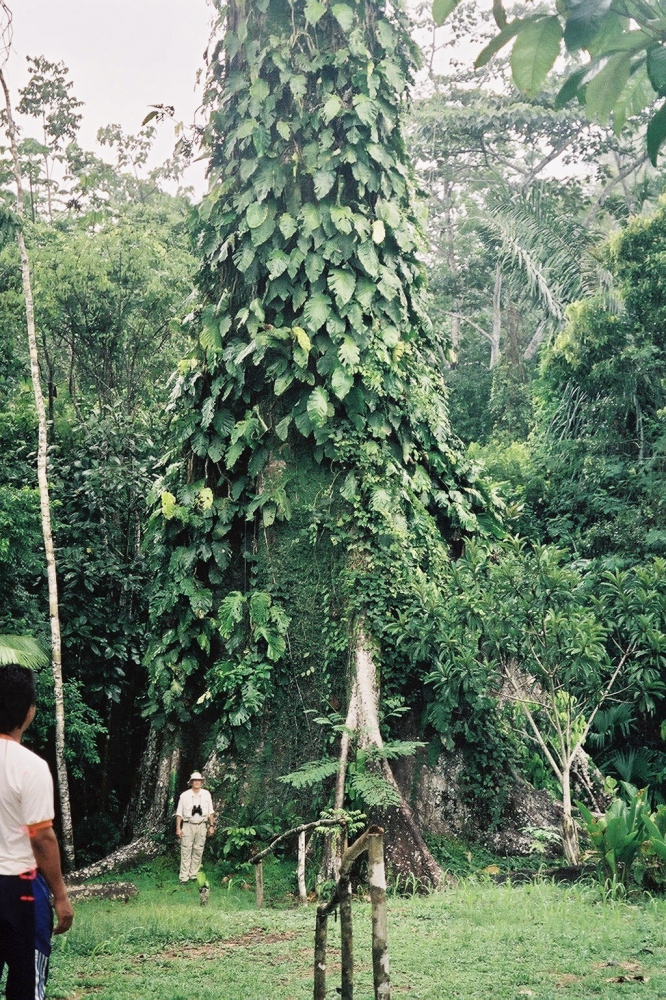
Blogs
Tree Analogy #4: Brokenness
Wednesday, October 9, 2024 by Phyllis Smith Kester
When we moved to Virginia in the 80s, I was surprised to find a large southern Magnolia tree with dark green leathery leaves in our front yard. These majestic evergreens can reach 80 feet at maturity. That winter, I found that the tree’s placement deflected cold north winds from our house.
However, an ice storm left the large ten-inch leaves encased in ice, and the extra weight broke the predominant top branch. Monty cut it off, for we thought a side branch would grow to replace it. Sure enough, the tree began filling in, and two branches competed for the top position until we had a second ice/snow event a few years later. This time, both top branches broke under the weight of the ice and heavy, wet snow. The gaping holes in the top ruined the “looks” of the tree. However, Monty thought we should give it time to see if it could recover. He trimmed up the places of the splintered breaks, and we waited to see if the tree’s resilience would fill in the enormous empty spots at the top.
Later, during our Christmas 2000 school break, we went to Brazil to celebrate with our friends Bob and Kathie Dooley, who had finished translating the New Testament into one of the tribal languages. Afterward, we flew into Iquitos, Peru, nestled along the Amazon River in the country’s northeastern part. We wanted to explore Peru and started with several days in the Amazon rainforest.
The South American Amazon is the largest, most diverse tropical rainforest on Earth, covering an area of 2.1 million square miles. Some say it accounts for more than half of the planet’s remaining rainforest and is home to more than half the world’s species of plants and animals.

We devoted one day to the Amazon Rainforest Canopy Walkway in the rainforest that ACTS (Amazon Conservatory of Tropical Studies) opened in 1993 to provide a research station for scientists in the rainforest. The suspended walkway starts at the ground and continues with swinging bridge-style walkways between 14 of the area’s largest rainforest trees. The walkway gradually ascends until you are 115-120 feet high, looking out over the rainforest. At about 1/3 of a mile, it is one of the longest canopy walkways in the world, with 12 platforms at different heights. It is used for extended research in an area where so much is yet to be discovered for the region is teeming with unparalleled biodiversity and natural marvels.
As we climbed higher, we found diverse wildlife and plants that lived and thrived on the large tree branches. Some spend their entire life at a certain height and never go to the ground. It showed me that a “community” exists at different levels/heights. Each tree is a vital component of the intricate web of life in the Amazon rainforest. It occurred to me that just as I feel secure and safe in a community where I build my life, these plants and animals also have a community that gives them a sense of “home” or security.
After returning to Virginia, I began looking at trees differently. I recognized that as a tree matures, it undergoes a period of expansion. Branches extend, and the tree becomes a thriving ecosystem, providing shelter and sustenance for various living things. When a tragedy causes it to lose branches, in some cases, over time, the tree heals from the injury. The rest of the tree begins to fill where the space is left, as was the case for our Magnolia. (You can see from the picture that, over time, other branches filled the holes.)
Isn’t this similar to what we find when a tragedy takes a toll on us and leaves a large hole in our lives and (branches) relationships with others? As we mature and grow in our relationship with Christ, we spread our arms (branches) and reach out in our relationships to others. What happens to us when a severe storm breaks off one of those branches of relationships—either through divorce, death, abandonment, or some other tragedy? That broken branch mars the “appearance” of wholeness or completeness in the “look” of our “tree/life.” It takes time in the “good soil of God’s Word” and the warmth of his “Son” to nourish and help us heal. Over time, other “branches or relationships” will begin to fill in that empty/broken place in our life—NOT REPLACE THAT WHICH WAS LOST—but fill in some of the gaps healingly.
However, does this idea of a “broken branch” translate to the awful destruction we’ve seen with Hurricane Helene and its aftermath? It is much more than a broken limb on a singular tree. It is more like taking out several Kapok trees and the entire habitat connected to each.
This situation in the southeastern USA reminds me of how the Body of Christ works to help all communities that have been destroyed. Being the hands and feet of Jesus involves more than mere acknowledgment of His teachings. It requires us to live out His words through active service, showing the world His love through our deeds. This calling compels us to make a difference, to touch lives, and to be a living representation of Christ’s compassion and grace. As a community, the Church can play a crucial role in supporting and rebuilding communities affected by tragedies, just as the Body of Christ can provide comfort and healing to individuals in need. It is essential for people who’ve experienced trauma or loss or are alone to be a part of a healthy community. It can help them feel connected to others and feel part of something larger than themselves.
Not only do we pray daily for all those affected by this tragedy and do all we can physically and/or financially to help the thousands affected in multiple states, but we need to realize this will take a lot of time, more like years, for those most affected. Are we committed to it for the long term? The roads into some of these affected mountain areas are missing or impassible. Yet, with winter approaching, many have been told they will not have power until January! This is not some distant land; this is in the United States!
Isn’t this one of those situations when the Body of Christ is to envelop them in love in every way we know possible so that they can eventually heal and recover? Think about it—if you woke up tomorrow morning and discovered that everything you owned and used was gone, along with perhaps some or all of your family—what kind of help would you need? We are to be Christ’s hands and feet, surrounding and helping people get back on their feet in times like this. Let’s do this!
SERVING OTHERS IS SERVING JESUS: Matthew 25:31, 34-40 (NIV)
“When the Son of Man comes in His glory.…Then the King will say to those on his right, ‘Come, you who are blessed by my Father; take your inheritance, the kingdom prepared for you since the creation of the world. For I was hungry and you gave me something to eat, I was thirsty and you gave me something to drink, I was a stranger and you invited me in, I needed clothes and you clothed me, I was sick and you looked after me, I was in prison and you came to visit me.’ Then the righteous will answer him, ‘Lord, when did we see you hungry and feed you, or thirsty and give you something to drink? When did we see you a stranger and invite you in or needing clothes and clothe you? When did we see you sick or in prison and go visit you?’ The King will reply, ‘Truly I tell you, whatever you did for one of the least of these brothers and sisters of mine, you did for me.’”
Previous Posts
Singing
Phyllis Smith Kester
6/3/2025
Dreaming
Phyllis Smith Kester
5/21/2025
Tornado Alley
Phyllis Smith Kester
5/5/2025
Geodes--Part 2
Phyllis Smith Kester
4/23/2025
1940s in Oklahoma
Phyllis Smith Kester
4/8/2025
Buel Overcomes Adversity
Phyllis Smith Kester
3/24/2025
Buel Smith & Pitchers
Phyllis Smith Kester
3/11/2025
Remembering Grandpa Smith
Phyllis Smith Kester
2/26/2025
Meeting Corrie ten Boon
Phyllis Smith Kester
2/10/2025
Walking the Plank
Phyllis Smith Kester
1/28/2025
Train Ride in a Flood
Phyllis Smith Kester
1/13/2025
Saltillo Surprises
Phyllis Smith Kester
1/1/2025
Connecting Two Pictures
Phyllis Smith Kester
12/18/2024
Kintsugi Brokenness & Beauty
Phyllis Smith Kester
12/3/2024
Capillary Action
Phyllis Smith Kester
11/20/2024
A Forge and Anvil
Phyllis Smith Kester
11/5/2024
Tree Analogy #5-Bloom
Phyllis Smith Kester
10/24/2024
Tree Analogy #4: Brokenness
Phyllis Smith Kester
10/9/2024
Israel and Golan Heights
Phyllis Smith Kester
9/25/2024
Tree Analogy #3: Bent Tree
Phyllis Smith Kester
9/11/2024
Lesson From NASA
Phyllis Smith Kester
8/27/2024
Storm Warning
Phyllis Smith Kester
8/14/2024
Tree Analogy #2: Hanging Sod
Phyllis Smith Kester
7/31/2024
Tree Analogy #1: Angel Oak
Phyllis Smith Kester
7/17/2024
The Warning Shot
Phyllis Smith Kester
7/2/2024
Trip's Delayed Surprise
Phyllis Smith Kester
6/18/2024
Antelope Slot Canyon
Phyllis Smith Kester
6/4/2024
The Pioneer Woman
Phyllis Smith Kester
5/21/2024
What is a Woman, a Wife, or a Mother?
Phyllis Smith Kester
5/8/2024
Two Analogies
Phyllis Smith Kester
4/24/2024
Solar Eclipse Analogy
Phyllis Smith Kester
4/10/2024
EASTER
Phyllis Kester
3/26/2024
The Resurrection Plant
Phyllis Smith Kester
3/12/2024
Busted on Pikes Peak
Phyllis Smith Kester
2/27/2024
What is Love?
Phyllis Smith Kester
2/13/2024
Looking, But Not Seeing
Phyllis Kester
1/30/2024
Remembering Christmas 2023
Phyllis Kester
1/16/2024
The Potter
Phyllis Kester
1/2/2024
The Tree Ornament
Phyllis Kester
12/19/2023
Cockapoo Kristy
Phyllis Kester
12/6/2023
Surprises & Obsessions
Phyllis Kester
11/21/2023
Breaking Thru
Phyllis Kester
11/7/2023
Eagles
Phyllis Kester
10/24/2023
Facing Fear
Phyllis Kester
10/10/2023
The Bug-Eyed Monster
Phyllis Kester
9/25/2023
The Flash Flood
Phyllis Kester
9/12/2023
David's Library Book
Phyllis Kester
8/29/2023
Object Lesson: The Leaky Bucket
Phyllis Kester
8/16/2023
Turpentine Creek
Phyllis Kester
8/1/2023
The Surprise
Phyllis Kester
7/17/2023
Small Pleasures
Phyllis Kester
7/4/2023
Are Fathers Important?
Phyllis Kester
6/20/2023
Fathers and Father's Day
Phyllis Smith Kester
6/6/2023
Legacies of my mother, Hallie Hays Smith
Phyllis Smith Kester
5/23/2023
Hallie's Handkerchief Holder
Phyllis Kester
5/9/2023
A Voice from the Past
Phyllis Kester
4/25/2023
Object Lesson: The Crystal Paperweight
Phyllis Kester
4/11/2023
Grandma’s Quilting Bee
Phyllis Kester
3/28/2023
Actions have Consequences
Phyllis Kester
3/14/2023
Hungry Baby
Phyllis Kester
2/28/2023
Married to a Texan
Phyllis Kester
2/14/2023
Charley Kester’s Horses
Phyllis Kester
1/31/2023
Persistence In The Dirt
Phyllis Kester
1/17/2023
Object Lesson: Mushrooms in Our Life
Phyllis Kester
1/3/2023
Trip with Unexpected Twists
Phyllis Kester
12/20/2022
Grandma’s Important Legacy
Phyllis Kester
12/6/2022
-->


